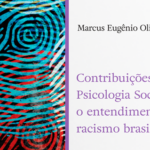Daniel Pacheco Lacerda, Associate professor of Production and Systems Engineering, Department of Production Engineering, Universidade do Vale do Rio dos Sinos, São Leopoldo, RS, Brazil.
Aline Dresch, Lecturer of Production Engineering, Department of Production Engineering, Universidade do Vale do Rio dos Sinos, São Leopoldo, RS, Brazil.
“Neo, sooner or later you’re going to realize just as I did that there’s a difference between knowing the path and walking the path”, Morpheu
In 2003, the following question was exposed to the scientific community of operations management: “Do we contribute so little because we are irrelevant?” Or, “Are we irrelevant because we contribute so little?” (FORD et al., 2003, p. 36). It is not a new issue for the scientific community, but it remains today. The criticisms focus on rigor in conducting research at the expense of its usefulness. The literature has portrayed this situation as a trade-off between relevance and rigor. Besides, examples of dysfunctionalities of logic “publish or perish” are also abundant.
In fact, “in theory there is no difference between theory and practice — in practice, there is — Yogi Berra” (SCHWENDENWEIN, 2013). Several alternatives have been presented to address this gap between researchers and practitioners. Based on the ideas of Herbert A. Simon exposed in his book The Sciences of the Artificial (1969), the concepts associated with Design Science and Design Science Research are derived. From the 2000s, Prof. Van Aken from the Eindhoven University of Technology published a set of papers highlighting the need to transpose these concepts to the field of operations management. From these works, many authors realized that the Design Science and Design Science Research could contribute to reducing the apparent gap between relevance and practice.
In this way, Design Science establishes itself as the research paradigm that seeks to generate knowledge of a prescriptive and design nature. Meanwhile, Design Science Research is a research method that allows the rigorous generation of useful artifacts (pragmatic validity) (DRESCH et al., 2015). Many new concepts present themselves to the scientific community in this context, such as artifacts, classes of problems, satisfactory solutions, utility, abduction, etc. So, this is a journey that begins.
This journey seeks to achieve impact, beyond the impact factor. In other words, if you are looking to generate research that impacts by: contributing effectively to better management; facilitating management activities; increasing the efficiency and competitiveness of organizations; generating positive externalities in the economic, social, and environmental terms.
Many other attributes could be listed and are in the set of needs of the organizations’ professionals. That is, build satisfactory and useful (pragmatic validity) solutions (artifacts) for a class of problems and, as a consequence, extend the scope of your results to the largest number of organizations as possible. The real impact happens in organizations, society, and the environment. This impact needs to be observed, measured, and disseminated so that the operations management research is increasingly necessary for the public for which it is ultimately intended.
At the same time, the knowledge developed in the building of these solutions must be reliable, refutable, and generalizable. The artifacts developed and the solutions reached need to be robustly evaluated and expressed to facilitate the understanding and expanding their reach in the scientific community. Scientific knowledge, under the Design Science paradigm, consists of artificial objects (artifacts), on how to design, develop, and evaluate them to achieve the desired solutions. A knowledge that expands our ability to design and generate solutions. In other words, it is not reduced to a means for generating the ‘true’ scientific theory, possessing objects of another nature. Therefore, all the existing scientific and methodological frameworks should not be omitted, instead, the abductive reasoning, classes of problem, artifacts, and Design Science Research are added.
The articles in this special issue share the desire to impact beyond the impact factor. The difficulties for this are not few. They begin with the teaching of Design Science in Management Education itself. This theme is addressed in the article “Mixing oil with water: how to effectively teach design science in management education?” written by Profa. Dra. Duygu Keskin and Prof. Dr. Georges Romme (2019 Distinguished Scholar-Practitioner Award of the Academy of Management), both from the Eindhoven University of Technology.
Other difficulties refer to the context, scale of coverage, and conflicting interests of the actors. Maybe the terms Smart Cities and Public Value will help to dimension the challenge proposed by the article “The smart cities methodology based on public value: the first evaluation cycle”. In this article, Profa. Dra. Josiane Brietzke Porto (UNISINOS) and Profa. Dra. Mirian Oliveira (PUCRS) seeks to impact cities and public services by proposing and evaluating the Smart Cities Methodology (SCML), consisting of Smart Cities Reference Model (SCRM) and the Smart Cities Assessment Method (SCAM), developed from the perspective of Public Value.
We hope that this special edition of the Brazilian Administration Review, in times of the COVID-19 pandemic, will be the ‘first case’ of impact for Design Science and Design Science Research to have exponential growth, without flattening the curve, to approach and expand the absorption of operations management research by organizations.
References
DRESCH, A., et al. Design science research: a methods for science and technology advancement. Springer: New York, 2015.
FORD, E. W., et al. Mitigating risks, visible hands, inevitable disasters, and soft variables: Management research that matters to managers. Academy of Management Executive [online]. 2003, vol. 19, no. 4, pp. 24-37. e-ISSN: 1943-4529 [viewed 27 May 2020]. DOI: 10.5465/ame.2005.19417905. Avaliable from: https://journals.aom.org/doi/10.5465/ame.2005.19417905
SCHWENDENWEIN, I. In theory there is no difference between theory and practice – in practice there is (Yogi Berra). Veterinary Clinical Pathology [online]. 2013, vol. 42, no. 4, pp. 399-400. e-ISSN:1939-165X [viewed 27 May 2020]. DOI: 10.1111/vcp.12100. Avaliable from: https://onlinelibrary.wiley.com/doi/full/10.1111/vcp.12100
To read the articles, access
KESKIN, D. and ROMME, G. Mixing oil with water: how to effectively teach design science in management education?. BAR, Braz. Adm. Rev. [online]. 2020, vol. 17, no. 1, e190036. ISSN: 1807-7692 [viewed 27 May 2020]. DOI: 10.1590/1807-7692bar2020190036. Avalaible from: http://ref.scielo.org/5g4t3m
PORTO, J.B. and OLIVEIRA, M. The smart cities methodology based on public value: the first evaluation cycle. BAR, Braz. Adm. Rev. [online]. 2020, vol. 17, no. 1, e190048. ISSN: 1807-7692 [viewed 27 May 2020]. DOI: 10.1590/1807-7692bar2020190048. Avaliable from: http://ref.scielo.org/zhycp2
External links
BAR – Brazilian Administration Review – BAR: www.scielo.br/bar
https://bar.anpad.org.br/index.php/bar/issue/view/59
Brazilian Administration Review: https://bar.anpad.org.br
Como citar este post [ISO 690/2010]:
















Recent Comments